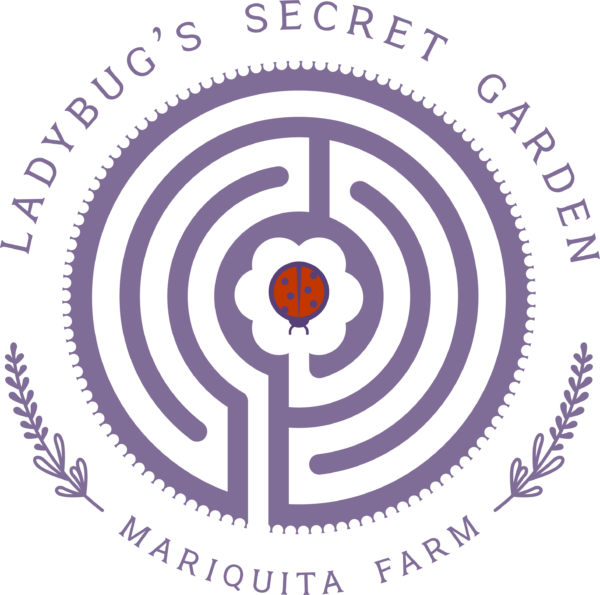Ladybug Letters
Farmer Andrew Griffin shares his perspective through his journal
Never Turn Your Back On A Bull
Soda Lake, in the Carrizo Plain National Monument, is often dry for for long
One Step At A Time
One Sunday morning, years ago- 1987, to be exact- a beautiful balloon surprised us
Thank You
Here's Jai harvesting Prickly Pear fruits, called "tunas" in Spanish. Jai also harvested LOTS
Pop Up and Event Schedule
Celebrate Fall with Mariquita Farm! The Tomato season is really moving along now and
In Loving Memory
The sanctuary of the Watsonville Buddhist Temple was lined with huge displays of colorful
Pop Up and Event Schedule
Sunflowers are SO COOL. Edible, ornamental , celestial Fibonacci equations playing out in the
A Taste For Pachamama
The bedroom slash squash storage warehouse. If I leave the squash in the field
Pop Up and Event Schedule
The first of this season's marigolds. I planted several thousand plants. Mariquita Farm
A “Slow” Recipe For Polenta
These corn plants have to be 10 feet tall- or more! I'm 6'1" Here's
FIELD OF FLOWERS
Our first marigold of the season. The variety is called "Chedi." Let me start
Mariquita Farm Pop Up Schedule for Tomato Season 2023
Hi Everybody: Tomatoes are ripening as I write these words to you. As our
Glamping With The Ladybugs
Our farm isn't just a place for the wild creatures to take refuge from
Just Ducky
Pinus Sabiniana along the road to Carrizo Plain. My father did his doctoral thesis
Good Clean Dirt
My daughter, Magdalena, as a child in the greenhouse. She's 26 now. My theory
Looking for a Few Good Gnomes
Ziggy on guard under a Rosa gallica complicata. This old fashioned rose only blooms
Hope Springs Eternal
I've got a counterintuitive tale for you. Several years ago, during the driest, dustiest,
There’s More to the Story
"Every picture tells a story" they'll tell you. And it's probably "a thousand words"
Giving Thanks!
Turkeys roaming in the labyrinth. Every day is "Turkey Day" at Mariquita Farm....but Thanksgiving
Something to Crow About
Starr with a few crows in Palo Alto. I'm booted up, caffeinated, mouse in
Step Right Up!
Our first Tomatopalooza of the season at Alladin Nursery in Watsonville. A "lollapalooza" is
The Tale of the Tomatillo
Tomatillo de Milpa The Islas Marias are an archipelago in the Pacific some 60 miles
Just Around the Corner
Green, unripe San Marzanos on the vine. Broadly speaking, there are two principal categories
Where Has All the Water Gone
Windmill at Mariquita Farm Water witching works like a charm. Or not. Some people
A Hollywood Drama
Young sage on left, nepitella (or Roman mint) by Samson, the "royal" cat. If
Saving Seeds
When I think about the desirability and feasibility of a farm saving its own seed,
Beware Beelzebub
Basil, the backyard gardener and amateur ethno botanist from Basel, took a step into
The Many Cats of Mariquita
Samson watching over the Mariquita labyrinth Oh, my God, the violence lay hidden in
I Beg Your Pardon
Purslane, cultivated as a crop "April showers bring May flowers," goes the old
A Field with a View
Mt. Shasta looms over Redding, CA What's the stupidest thing you've ever done?
Magic Beans
Controversy was swirling at a recent school board meeting- "A REAL FOOD FIGHT!" read
Big News
Hi Mariquita supporters, We've been busy planting, weeding, and chasing the birds away from
Get Ready…Get set…Go is coming soon!
The lemon arbor at Ganna Walska Lotusland in Montecito. Life gave me lemons...But this
Maybe I’m Amazed
The very warm, almost hot, afternoons that we've been having this past week could lead
Creative Evolutions
Borders are interesting places. Yes, borders divide people into one side and the other
Cultivating Luck
We've turned up three rusty, old horse shoes as we've gone about getting the "windmill
Fire On The Mountain
It was hot last Friday afternoon as I returned home from my produce deliveries
Fun Facts for the Vegetable Literate
"FAQs" are "frequently asked questions," and the reason they are frequently asked is because
Glimpses of Late Summer
Late summer is an especially busy time on the farm, with harvesting summer crops,
Gobble, Gobble!
The only turkey bird native to California, Meleagris californica, went extinct 10,000 years ago.
A Pinch of Fresh Seasonal Herb Salt
I Didn't your mother ever tell you "You can catch more flies with sugar
Enjoy the August Harvest
In his effort to liberate India from the British Empire Mohandas Gandhi
Shedding Light on the Nightshade Family
I have never been to Jalapa. I don't even know any Jalapeños, but I
The Tomatoes are Coming
People have been asking when the dry-farmed Early Girl tomatoes and San Marzano tomatoes
For Plants, Everyday is “Sun” Day!
Fathers Day fell on June 20th this year and seemed to get more attention
Our Lady’s Birds
We call them "Ladybugs" but they're beetles, not "bugs." Scientists call the Ladybug family
The Many Scents of Lavender
Planting a garden is a blatant act of optimism; even the tiniest seed takes
The Milpa and the Holy Trinity
We planted the first stage of our little "milpa" this weekend. A milpa is
Brand New Potatoes!
New potatoes are just that-new! And they're probably my favorite crop of the year. We're
What Kind of Pea?
The girl was SO insanely sensitive, and yet her morbid fragility was somehow proof
A Different Type of Sting!
As I cultivated my rows of young lime trees yesterday with my little tractor
From Oaxaca to Watsonville
Fidel is working out a grass roots level marketing program for his nascent farm.
A Tale of Avocados
I don't care what Marjorie Taylor Green or the other "researchers" from the Q-anon
Living on the Central Coast
His supporters say it was a "heart condition" but opposition politicians claimed that the
The Colors of Cauliflower
When I was a kid here in California cauliflower was white. Nowadays consumers can
Your Dollars Can Count Supporting Farms in Your Backyard
Askelon is a port city along the eastern coast of the Mediterranean Sea. Today
Did You Say Chayote?
We're still seeing rain and cold night temperatures, but spring planting is underway. The
The Mystery Behind the Lemon
"When life gives you lemons, make...." Yada, yada, yada, you know how the saying
It’s Time to Say Thank You
"Do you bathe," she asked me. "Are you interested in personal hygiene?" I took
Cabbage Family Reunion
The time has come,' the Walrus said, To talk of many things: Of shoes
Kohlrabi Rising
The humble kohlrabi and anoint it as the next "it" vegetable. Why not? Kale got the
Joyful Roaming Through the Countryside
I heard a mighty crash down in the forest below the packing shed but
Mysteries
Hi Everybody: For years now we've called the mixed produce boxes that we have been
You say ‘tomato.’ I say ‘tomato.’
Concerning the Piennolo tomato, there's a noted Bay Area restaurateur who shall go unnamed because, despite
At Home with Ambiguity
If you're not "at home" with ambiguity, surprises, and triage as a lifestyle, then
Yerbas Buenas
Starling is drying bales of Hoja Santa in the food dehydrator so our kitchen is
Smoke in the air. Fire in the belly.
Covid creeps closer; a worker on our landlord's farm fell ill and is in
Gems, Jewels and Beans…
Last winter, right before Covid erupted into our midst, I had the opportunity to
Potatoes and the web
The potatoes in this week’s share box are “new” potatoes; that is, they have



